The Choragic Monument of Lysikrates and its Reception
John Goodinson and Peter Schultz
The choragic monument of Lysikrates is one of the most well-known and well preserved structures of fourth century B.C.E. Athens. Located below the south eastern corner of the Acropolis, on the Street of the Tripods, the monument was erected by Lysikrates – an Athenian choregos – to commemorate his triumph in the theatrical contests of the City Dionysia in 335/334 B.C.E. (Below: reconstruction).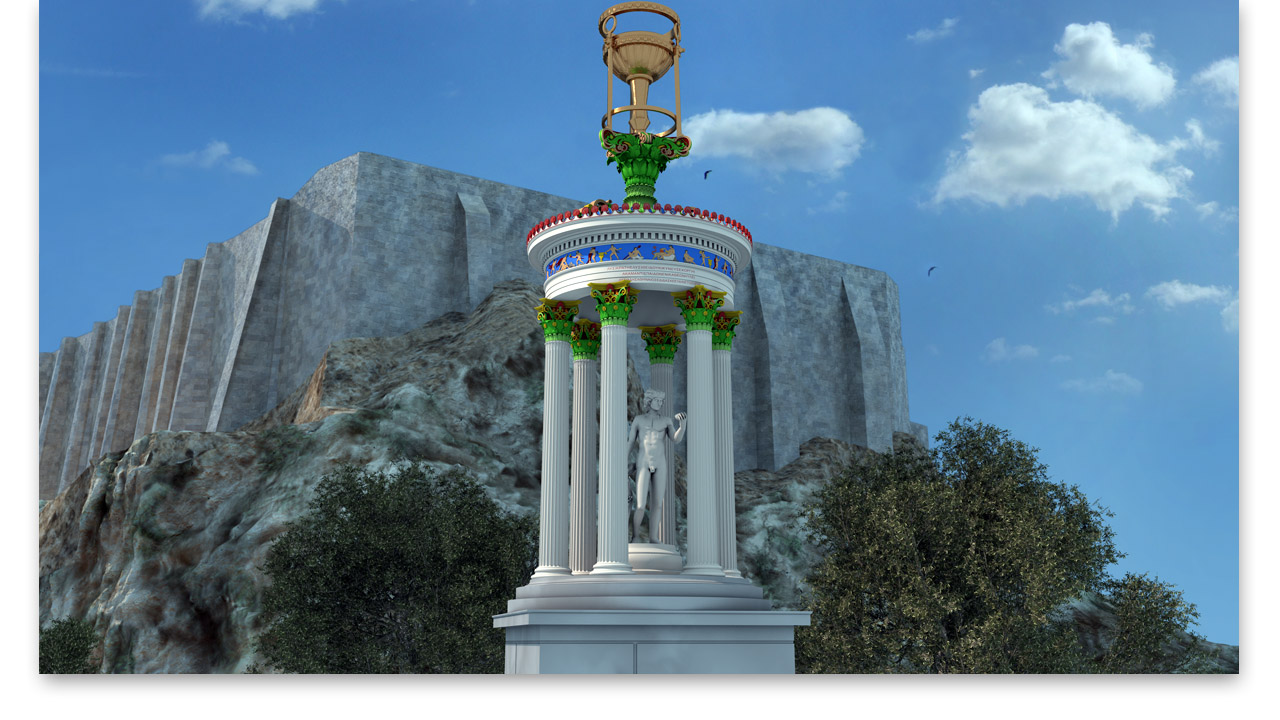
The location of Lysikrates’ monument was dictated by tradition; the ‘Street of the Tripods’ took its name from hundreds of similar victory dedications
that had been installed along its curbs since the beginning of the fifth century B.C.E. (Paus. 1.20.1; Plut. 1.3). There is little question regarding to the Lysikrates monument’s basic function or topographical setting. The monument’s date, occasion, and dramatis personae are equally familiar. The famous inscription (IG II 2 3042) on the structure’s eastern architrave records:
Lysikrates, son of Lysitheides, from the deme of Kikynna, choregos.
[The tribe of] Akamantid won the boys choir. Theon, flute player.
Lysiades of Athens, choir master. Evainetos, archon.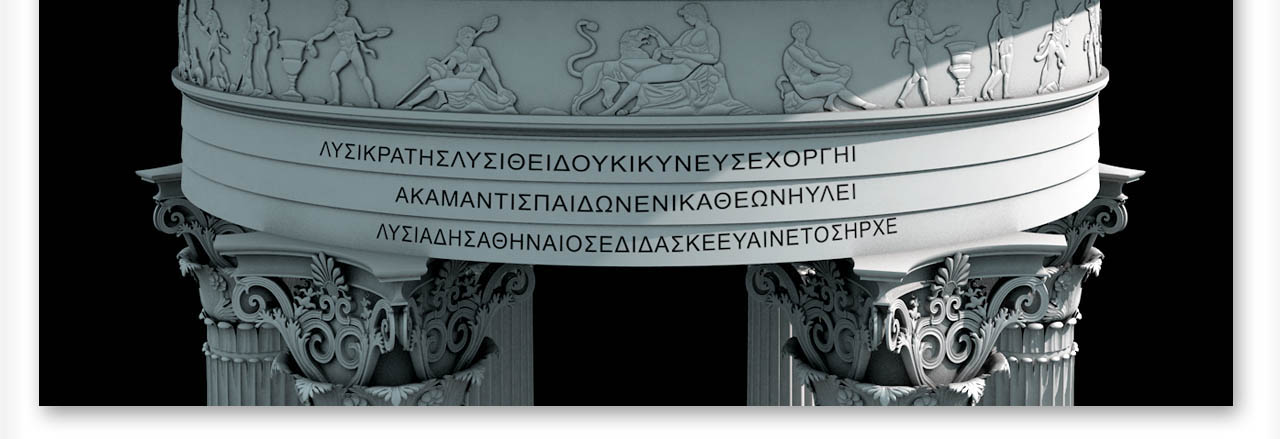
Lysikrates was a prominent Athenian citizen – he must have been in order to have belonged to the liturgical class. Theon and Lysiades were surely prominent musicians. And Evainetos was archon of Athens in the year 335/334 B.C.E. In sum, the choir that Lysikrates sponsored won the dithyrambic contest of the City Dionysia in 335/334 B.C.E. There is little confusion regarding the monument’s patron or context.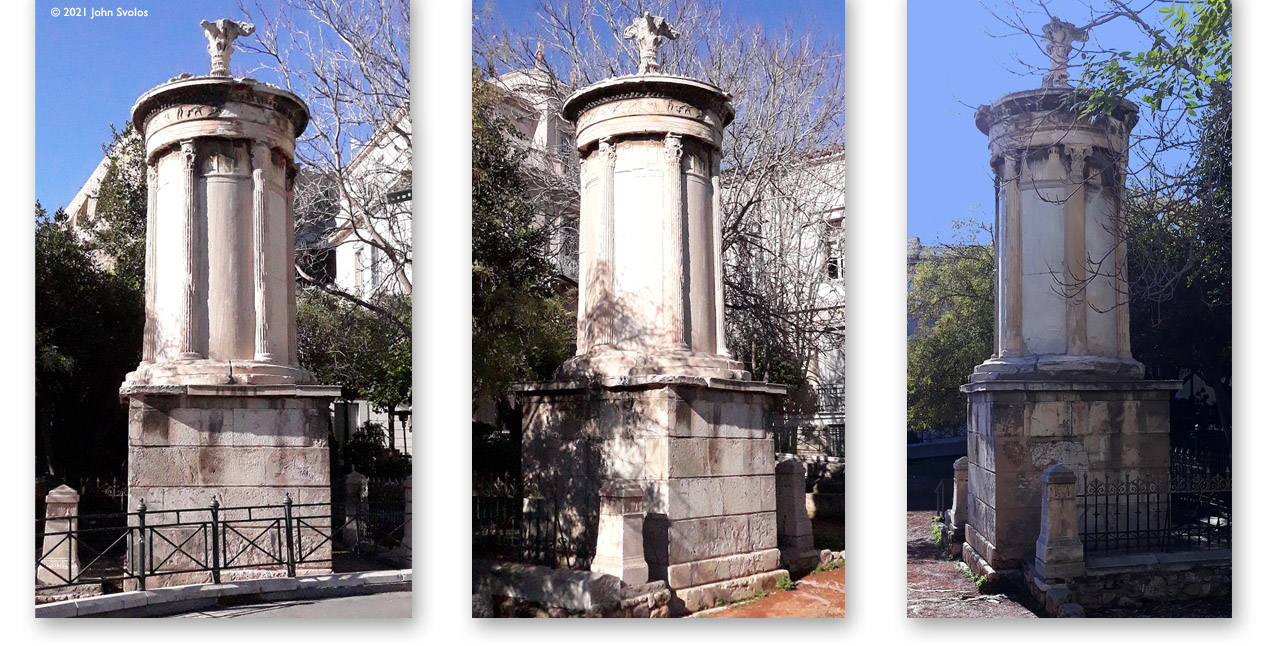
Above: The monument of Lysicrates in Athens. Photography: ©2021 John Svolos. Below: reconstruction of the monument 'enclosed and open'. Also with and without proposed 'sculpture figures' shown in the larger 'open' reconstruction.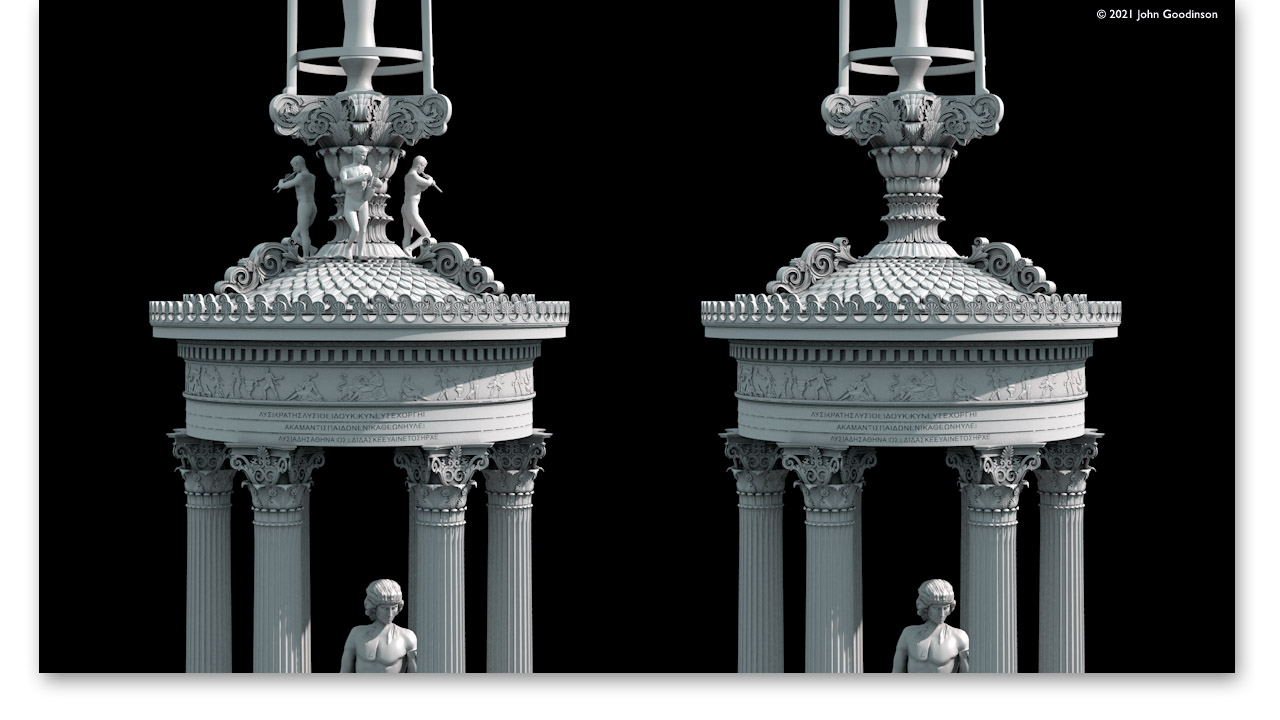
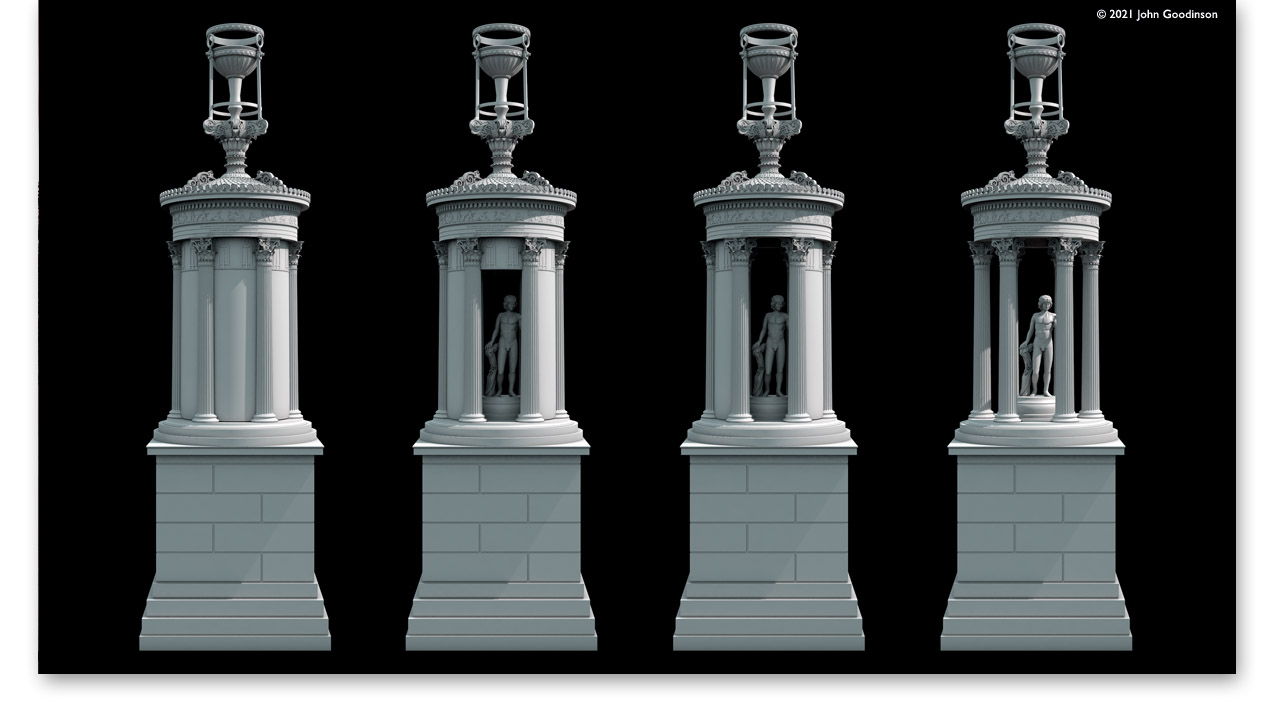
Even though the form, function, and meaning of the Lysikrates monument is well-known, there is one important aspect of its design that has not received the attention that it deserves. In a 1977 study (Bauer, Heinrich. Lysikratesdenkmal: Baubestand und Rekonstruktion. 1977). Bauer showed that the monument’s architect had originally designed the structure as a monopteros – that the little building’s intercolumnations were originally meant to be open and that the statue protected and framed by the monument was originally meant to be seen from all sides. The basic appearance and structure of this original plan has now been articulated and modelled by digital sculptor and Anasynthesis project leader John Goodinson.
In 1762, architect James Stuart and architect and draughtsman Nicholas Revett published their ‘Antiquities of Athens’ (John Haberkorn LONDON MDCCLXII). The publication included the monument of Lysicrates. Stuart and Revett’s publication featured a series of detailed engraved architectural plan drawings. In describing the monument they also featured an engraving of the monuments current condition - partially embedded in the wall of the Garden belonging to the French Capuchin monastery that had been founded on the site in (circa: 1669).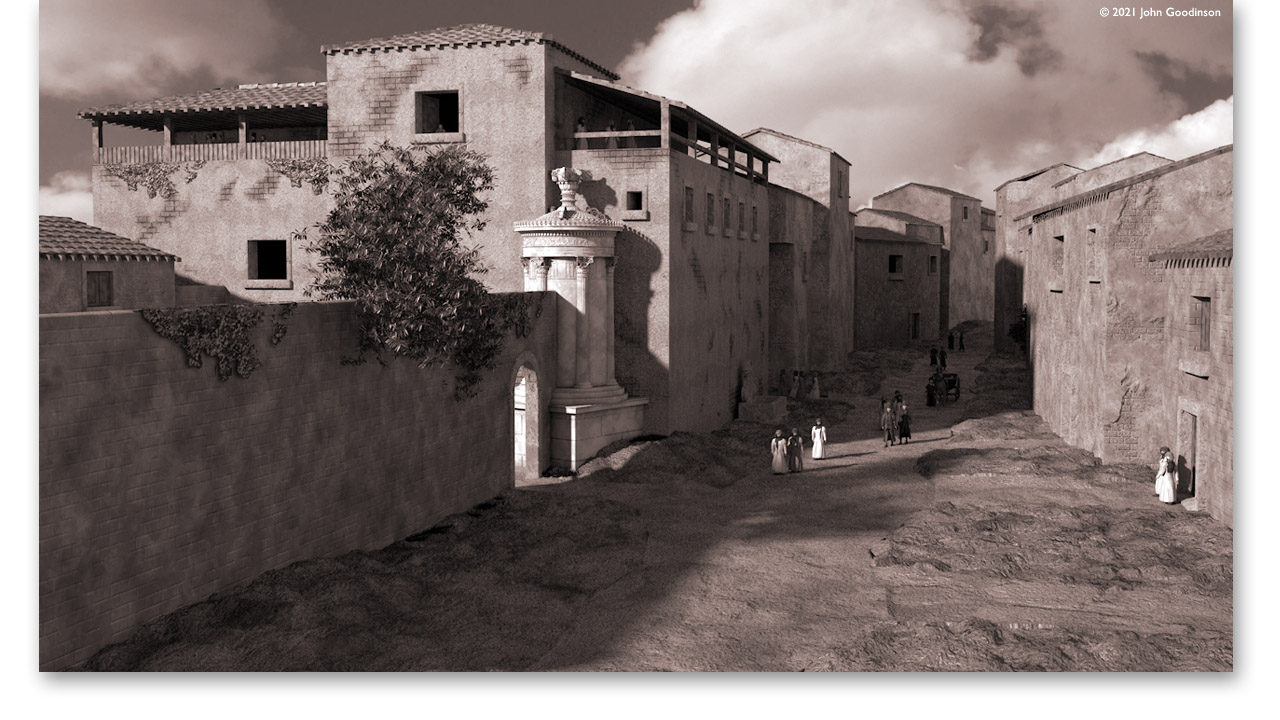
Stuart and Revett's four volume publication greatly influenced a growing admiration for classical Greece. Their plan views and illustrations inspired antiquaries, scholars, and gentleman amateur archaeologists.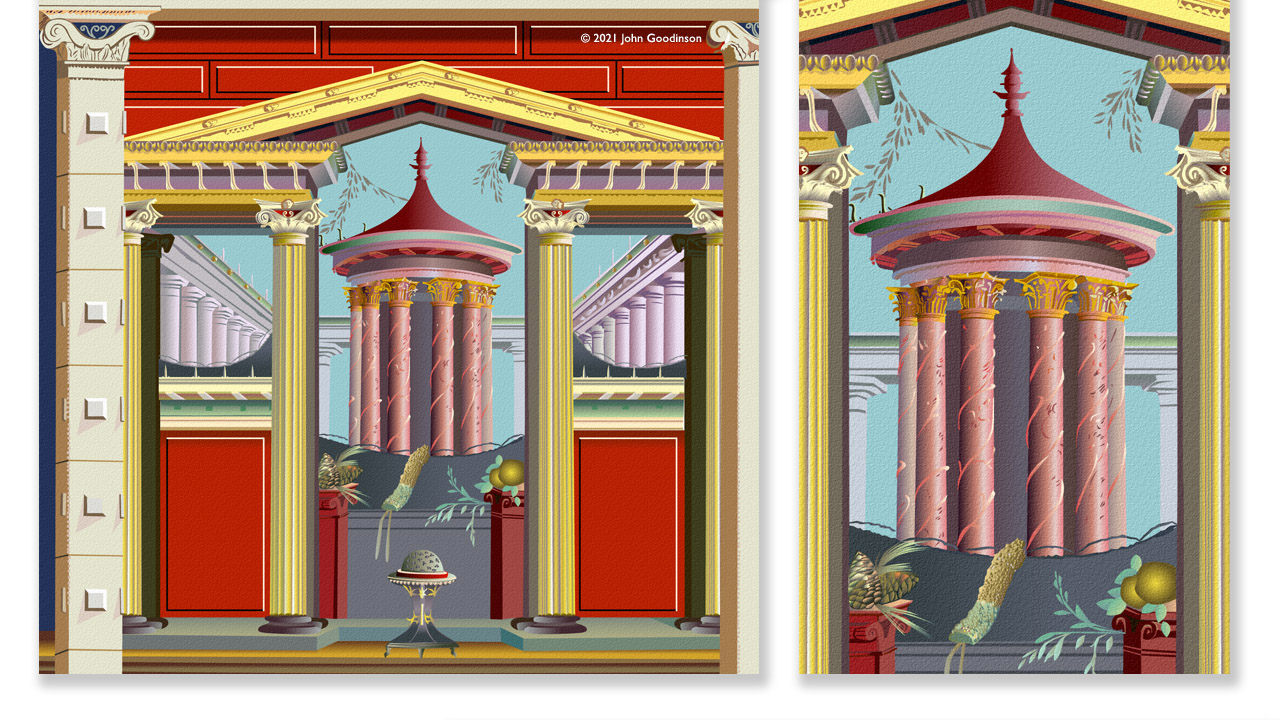
Above: Digital reconstruction of a section of frescoe from the Villa of P. Fannius Synistor. This Villa is located approximately one mile north of Pompeii and was buried by the eruption of Vesuvius in 79 A.D. The influence of Greek architecture and especially the monument of Lysicrates is evident in the artist’s composition. Illustration ©2022 John Goodinson.